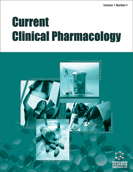Abstract
Purpose: Bone antiresorptive treatment is associated with osteonecrosis of the jaws. Interventions used to treat this complication are diverse, controversial, and largely empirical but certain risk factors could help in its avoidance. The aim of this evidence-based review is to elucidate any interventions that are effective in reducing the risk for development of ONJ in cancer patients receiving bone antiresorptive therapy and to quantify the effectiveness of such interventions.
Materials & Methods: We searched MEDLINE, EMBASE, the Cochrane Central Register of Controlled Trials (CENTRAL), and other trial registries through January 2012. We selected randomized controlled trials (RCTs). Cohort studies were included only as long as there are no RCTs on the same modality.
Results: Twelve studies were included in the systematic review while nine studies contributed to the various comparisons. Prescribing denosumab (DSB) instead of zoledronic acid (ZA) may not be expected to reduce risk ONJ (RR:0.71 [99% CI: 0.41-1.24], I2=0%). Prescribing clodronate (RR:10.15 [99% CI: 2.43-42.35], I2=0%) or pamidronate (RR:4.41 [99% CI: 1.90-10.24], I2=16%) instead of ZA may reduce risk for ONJ. Dental extractions remain the most potent risk factor for ONJ (RR:14.04, [99% CI: 10.36-19.03], I2=0%) and their avoidance can be considered an effective risk-reductive intervention. ONJ risk can be reduced by dental prophylactic measures (RR:0.45, [99% CI: 0.23-0.85], I2=7%).
Conclusions: DSB and ZA might cause ONJ more frequently compared with chlodornate or pamidronate. Prescription pamidronate and clodronate helps avoid the complication. Reducing the administered dose for denosumab and zoledronic acid might reduce risk for ONJ as well. More randomized clinical trials comparing reduced doses of these regimens against those currently approved are needed.
Keywords: Bisphosphonate, denosumab, meta-analysis, oncology, osteonecrosis of the jaw, risk reduction
 28
28





















